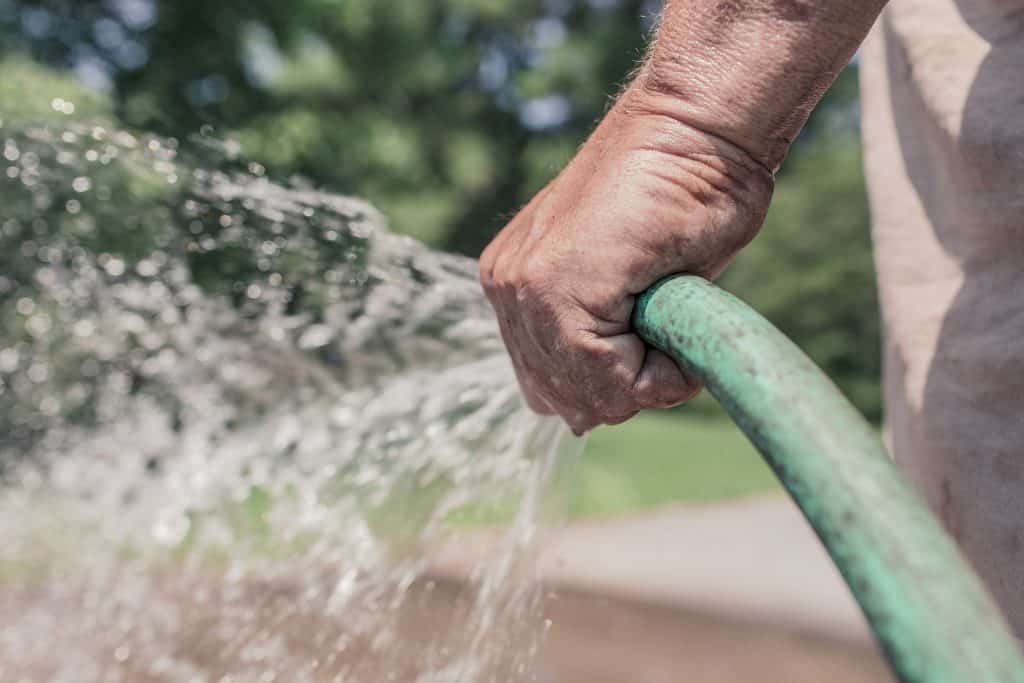Is your lawn dull and thin? It’s not uncommon that the vision of the lawn you have in your head doesn’t match the one in reality. That doesn’t mean you can’t make it happen, though.
If you’re wondering how to make your lawn full and green, then wonder no more. By following these steps with dedicated effort, you can turn your dream lawn into reality. Tune in to find out more.
How Do You Make Your Lawn Green?
Brown lawns are not hard to avoid. Follow these tips to keep your lawn green and full.
1. Test Your Soil
A soil test is an analysis of a soil sample that’s done by a laboratory. It helps you in determining what’s wrong with your soil and what it needs. In general, lawns should be tested every two to three years.

This analysis reveals your soil’s condition. It estimates the number of available plant nutrients. It also reveals acidity or pH level.
If the pH level in your soil is too low, then your soil isn’t absorbing the nutrients it requires. Such details will let you in on what’s preventing your soil from thick, rich growth. They’ll also pave the way as to what steps you’ll take next.
2. Fertilize in Fall
It’s no secret that you need a good fertilizer for a rich lawn. A high-quality fertilizer can reduce weed encroachment, strengthen roots, and promote thick growth.
We’re not saying to stop fertilizing during the spring. But fall fertilization is important. You need to give your soil food before it rests in winter. You might think that the grass has gone dormant, but in reality, it’s conserving energy.
When fertilizing, make sure you’re using natural fertilizers. They’re better for both your lawn and the environment.
3. Deep Water Soil Infrequently
It’s a common mistake to water frequently. If you water your lawn too often within short periods, your roots won’t reach deep into the soil. In this case, these shallow roots can’t get to the soil nutrients.
You need to water your soil deeply. Make sure that the water reaches four to six inches deep. To do this, water for about thirty minutes using a sprayer.
Whereas with gardens and plants, you want to use a quality soaker hose, with lawns you need to use a spray technique to adequately cover the entire grass area.

Then use a spade to reach into the soil. Pull out a wedge and examine it. Is it wet? Remember: you need the water to penetrate four to six inches deep.
If it isn’t wet, it could be because you have a leak in your hose. Or, the soil is so dry that it hasn’t dampened the soil yet.
If your water hasn’t reached that deep, then water for longer than thirty minutes. You could use a timer to help you when watering.
- If you have sandy soil, then you should water every two to three days. Sandy soils dry out quickly. They also can withstand quick, intense watering.
- If you have heavy soil, then water it less frequently. Make sure you water for long periods, but never go too heavy.
4. Aerate Your Lawn
Lawns can easily get compacted. Anything from your pets to regular mowing could contribute to soil compaction.
If you have compacted soil, then this could cause issues with nutrient absorption. Air circulation and water drainage are also problems that come with compacted soil. All of these issues could prove a hindrance to getting a lush, healthy lawn.
This is where aeration comes in. Aerating your lawn regularly promotes loose soil and good air circulation. Nutrient absorption will also improve.
To aerate your lawn, simply punch holes in it. Make sure these holes are three inches deep. For this purpose, you could use a handheld aerating tool or an aerating machine.
5. Keep Weeds Under Control

Weed encroachment proves a real threat to your lawn. As weeds spread, the benefits of fertilizer on your lawn decrease. This is because weeds and grass often clash due to their common need for the sun, water, and nutrients. If you control your weeds, then you control this competition.
Don’t just go out and start hacking away at your weeds, though. You’ll just spread the seeds everywhere, while using up the trimmer line in your weedeater.
Use a pre-emergent herbicide to prevent weeds and crabgrass. Apply it between the second and third mowings of your lawn.
It’s also essential to use the pre-emergent herbicide in mild weather. If it’s too hot, the herbicide can irritate the grass. If it’s too cold, the herbicide may not be as effective. If it’s rainy, then the herbicide can be soaked off.
You should also never use any pre-emergence treatment while overseeding. Such treatments will keep all the seeds from emerging normally.
6. Overseed Your Lawn
Overseeding is beneficial for growing a thicker lawn. It’s also effective for maintaining one. When you overseed, you sow grass seed in your lawn to make it thicker. This way, new emerging grass can crowd in between already grown grass. This gives your lawn a thicker, healthier appearance.
When choosing grass seed, make sure it’s appropriate for your lawn conditions. They should fall in line with climate conditions as well. For example, if you’re growing grass in an area where sunlight varies, you should buy shade-appropriate grass seeds.

Similarly, if you’re growing grass in an area where sunlight is intense and full, then you should buy sun-tolerant grass seeds.
Be careful to give your seeds appropriate time to grow.
Keep in mind this is going to lead to thick luscious grass, so you’ll need blades designed for thick grass come spring time.
[lyte id=u4DRfPMd7yQ&ab_]
Conclusion
It’s not an impossible task to turn your lawn full and green. Achieving that full lush appearance just takes a bit of work. But it’s completely doable.
Once you follow these steps, you’ll gain a better understanding of your soil. Through providing its needs and requirements, you’ll be working towards your heavenly lawn at lightning speed.